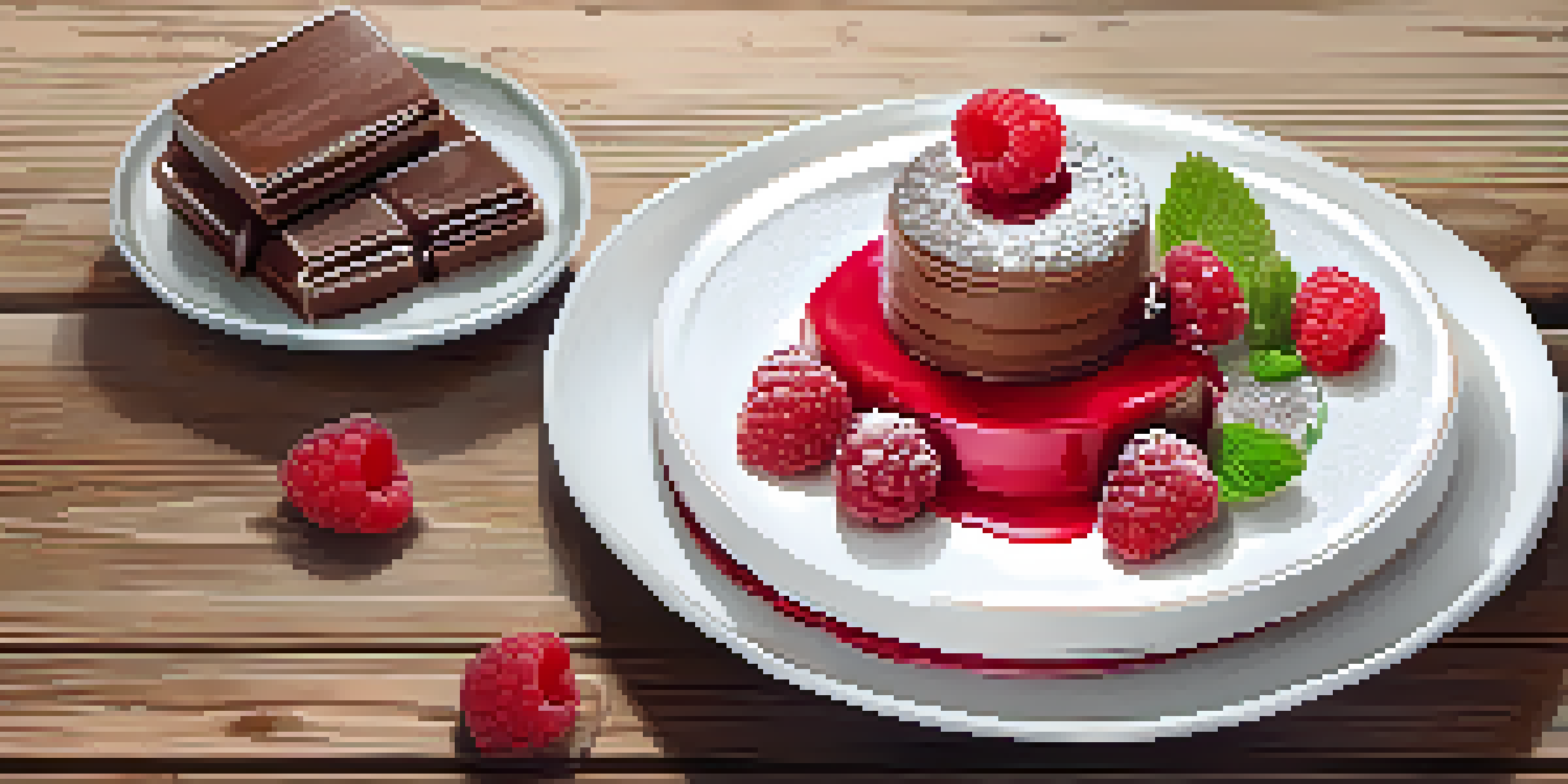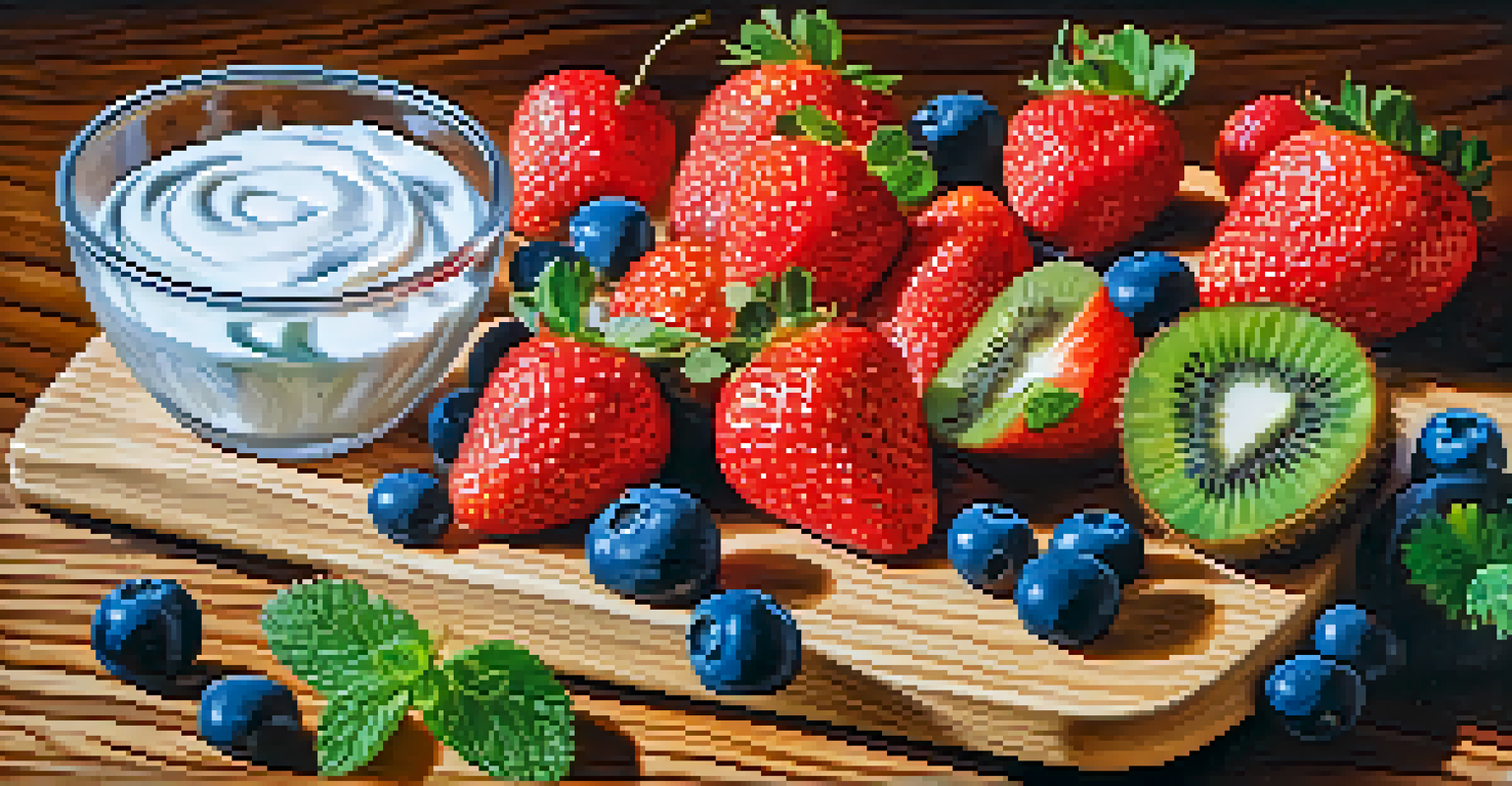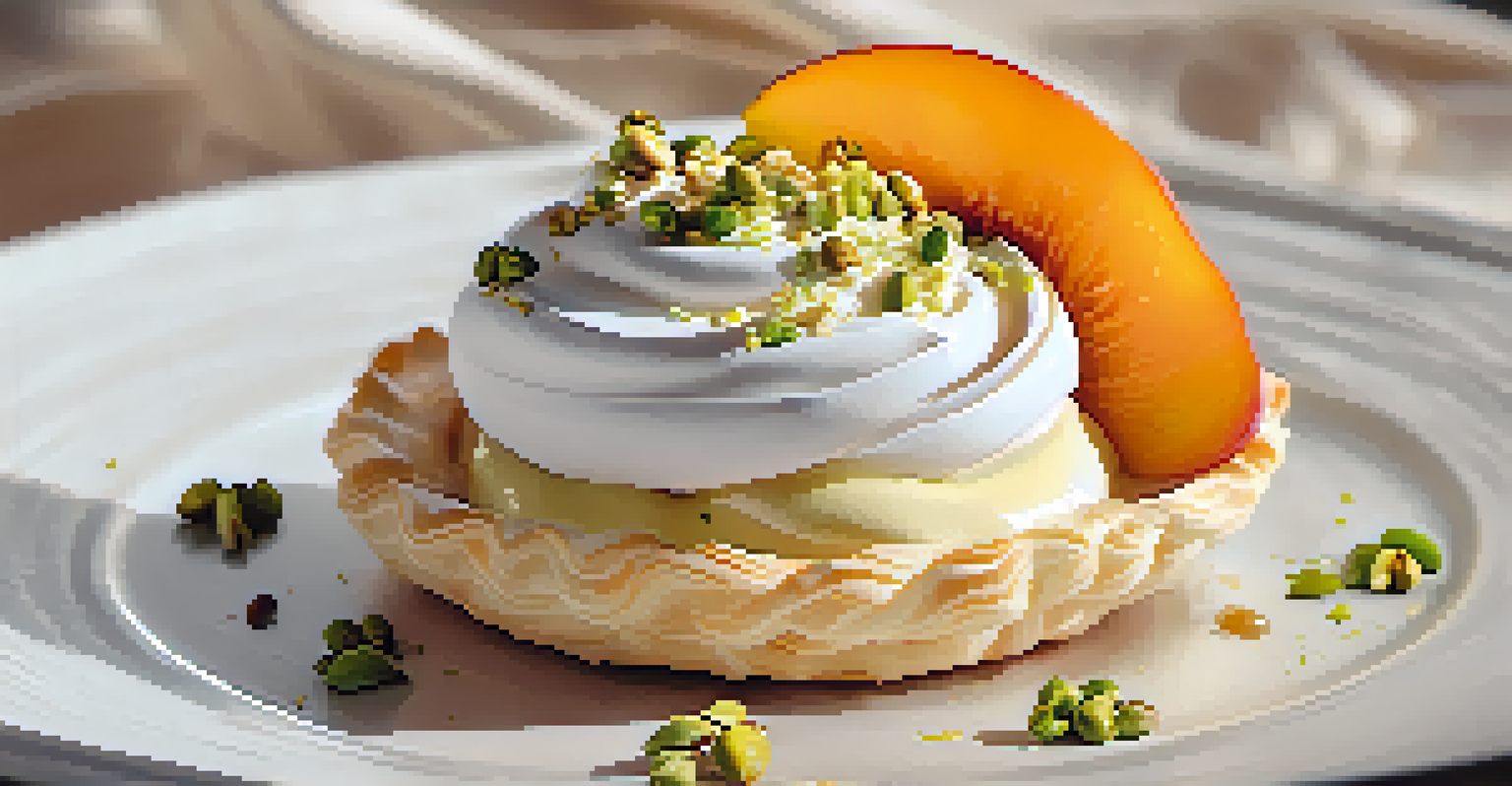Advanced Baking Techniques: Crafting Luxurious Desserts

Understanding the Basics of Advanced Baking Techniques
Before diving into advanced baking techniques, it’s essential to grasp the fundamentals. Mastering basic baking methods such as creaming, folding, and tempering sets a solid foundation. These techniques may seem simple, but they are the building blocks of luxurious dessert creation.
Baking is both an art and a science, a delicate balance of creativity and precision.
Understanding how ingredients interact is crucial. For example, knowing how butter temperature affects creaming can lead to perfectly fluffy cakes. Similarly, learning about the role of different types of flour can elevate your dessert game significantly.
Once you’re comfortable with the basics, you’ll find that advanced techniques, like sous vide or molecular gastronomy, become more accessible. These methods allow for creativity and innovation, transforming traditional recipes into something extraordinary.
The Art of Tempering Chocolate for Elegance
Tempering chocolate is a vital skill for creating stunning desserts. This process involves melting chocolate to a specific temperature and then cooling it, resulting in a glossy finish and a satisfying snap. Mastering this technique can elevate your desserts from good to gourmet.

To temper chocolate, it's helpful to understand the concept of crystalline structures. When correctly tempered, the cocoa butter forms stable crystals, giving your chocolate that delightful sheen. It’s this attention to detail that makes a dessert truly luxurious.
Master Baking Basics First
Understanding fundamental techniques like creaming and tempering is essential for mastering advanced baking skills.
Remember, practice makes perfect! Don’t be discouraged if your first attempts aren’t flawless. With each batch, you’ll gain confidence and improve your skills, leading to beautifully crafted chocolate decorations for your desserts.
Creating Flawless Meringues: A Delicate Balance
Meringues can be a showstopper in any dessert, but achieving the perfect texture requires precision. The key lies in whipping egg whites to the right peaks and ensuring no grease contaminates your mixing bowl. This delicate balance can make all the difference in your dessert's overall presentation.
The secret ingredient is always fresh ingredients and a dash of passion.
There are different types of meringues: French, Swiss, and Italian, each with unique preparation methods. For instance, Swiss meringue is heated gently over a double boiler before whipping, resulting in a silkier texture. Understanding these variations allows you to choose the best meringue for your dessert.
Don’t shy away from experimenting with flavors and colors in your meringues. A hint of vanilla or a splash of food coloring can elevate your dessert’s visual appeal while adding a personal touch.
Exploring the World of Pastry Creams and Fillings
Pastry creams are versatile and can add richness and depth to your desserts. Whether it’s a classic vanilla pastry cream or a chocolate variant, mastering this creamy filling opens up a world of flavor possibilities. These creams can be used in tarts, pastries, and even as a filling for cakes.
Creating the perfect pastry cream requires patience and attention. It's crucial to cook the mixture slowly to avoid lumps and achieve that silky texture. Straining the mixture afterward ensures a smooth finish, perfect for enhancing any dessert.
Tempering Chocolate is Key
Mastering chocolate tempering enhances dessert presentation with a glossy finish and satisfying snap.
Feel free to experiment with different flavorings, such as coffee, citrus, or spices, to create unique combinations. A well-crafted pastry cream can transform a simple dessert into a luxurious experience that delights the palate.
Mastering the Art of Layering and Assembly
Layering is where the magic happens in dessert creation. It allows you to combine textures and flavors for a sophisticated result. Think of a classic tiramisu, where layers of coffee-soaked ladyfingers and creamy mascarpone come together to create an indulgent treat.
When assembling your desserts, consider the visual aspect as well. Using clear glasses or elegant plates can showcase the beautiful layers you’ve created. Aesthetics play a crucial role in how we perceive flavor, making presentation just as important as taste.
Don’t be afraid to mix and match different components. A chocolate mousse layered with fresh berries or a fruit compote can create a delightful contrast that excites the palate. The goal is to create a harmonious balance of flavors and textures that leave a lasting impression.
Incorporating Fresh Ingredients for Flavor Enhancement
Using fresh, high-quality ingredients can elevate your desserts significantly. Fruits, herbs, and spices, when used thoughtfully, can enhance flavors and add unexpected twists to traditional recipes. For instance, a hint of basil paired with strawberries can create a refreshing and sophisticated dessert.
Seasonality plays a vital role in ingredient selection. Utilizing fruits that are in season not only ensures better flavor but also supports local farmers. Fresh ingredients can transform your dessert into a vibrant masterpiece that showcases nature's bounty.
Presentation Enhances Enjoyment
Thoughtful presentation, using garnishes and plating techniques, elevates the overall dining experience of desserts.
Don’t overlook the power of texture! Adding fresh elements, like crunchy nuts or creamy whipped cream, can provide contrast and make each bite interesting. This synergy of flavors and textures is what truly makes a dessert luxurious.
Exploring Flavor Pairings: The Key to Unique Desserts
Flavor pairing is an exciting aspect of creating luxurious desserts. Understanding which flavors complement each other can open up a world of culinary creativity. For example, the classic combination of chocolate and orange creates a delightful contrast that never goes out of style.
Experimenting with unexpected pairings can lead to unique and memorable desserts. Think about the balance of sweet, savory, and tart flavors. A salted caramel sauce drizzled over a tangy lemon tart can create a perfect symphony of taste.

Always taste as you go! Adjusting flavors during the baking process ensures you achieve the desired outcome. This iterative approach allows you to refine your dessert until it’s just right, showcasing your personal style and creativity.
The Importance of Presentation in Luxurious Desserts
Presentation plays a critical role in the enjoyment of desserts. A beautifully plated dessert can enhance the dining experience, making each bite feel special. Think of plating as the final touch that brings your dessert to life, much like a finishing touch on a painting.
Use garnishes wisely! Fresh herbs, edible flowers, or a dusting of powdered sugar can add visual appeal and elevate the overall experience. Remember, people eat with their eyes first, so take the time to make your dessert visually stunning.
Mastering Baking Basics is Key
Understanding foundational techniques like creaming and tempering is essential for advancing your baking skills.
Experiment with different plating techniques to find what works best for your style. Whether you prefer minimalist designs or elaborate arrangements, personalizing the presentation will showcase your creativity and passion for dessert crafting.